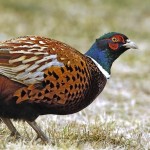Out of more than 7,500 U.S. state parks, Kansas makes the list three times
While compiling a list of some of our country’s best state parks, The Active Times couldn’t ignore the state ofKansas; in fact, they couldn’t ignore the sunflower state three times. Out of more than 7,500 U.S. state parks to choose from, three Kansas state parks made the media group’s “36 Stunning U.S. State Parks” list. KanopolisState Park was listed No. 14, Lake Scott State Park No. 23, and Wilson State Park No. 34.
The following write-ups accompanied a photo of each park in the publication:
Kanapolis State Park
This state park is situated amidst the striking Smoky Hills region of Kansas and is treasured for its many miles of hiking trails that meander through canyons, prairies, and wooded creek bottoms. The sublime Dakota sandstone bluffs and craggy HorsethiefCanyon decorate the park and its surrounding area presenting pristine views of what’s considered some ofKansas’ most stunning scenery.
Lake ScottState Park
Named to National Geographic’s list of the country’s 50 must-see state parks, this aptly named “stunning oasis” has everything you could want in a park. Spanning 1,020 acres, the natural features include wooded canyons, rugged bluffs and fresh springs. LakeScott is large enough to accommodate boating and fishing and the extensive trail system allows horseback riding. With more than 26 archeological sites in the area, the remarkable features are more than just aesthetically pleasing.
Wilson State Park
This 945-acre park is tucked away in the center of the Smoky Hills and is well attended for the scenery its location affords. Hiking trails offer unrivaled views of native Kansas prairie and the Wilson Reservoir. Camping accommodations and cabins are available throughout the park and land is dedicated to mountain biking, fishing and hunting (in season only).
The next time you plan a family outing or a weekend on the lake, consider checking out one of Kansas’ many list-worthy state parks before crossing state lines. You just might find something stunning right here at home.
To view the complete list of The Active Times’ “36 Stunning U.S. State Parks,” visit
www.theactivetimes.com/36-stunning-us-state-parks.

